
A Square and a Playground below the Castle
由专筑网胡婧宜,小R编译
中世纪城堡脚下的广场曾长时间用作停车场,经过Ravnikar Potokar建筑事务所的改造,现在变成了综合游乐场和露天舞台综合广场。
Once used as an open-air car park, the area at the foot of the walls of a medieval castle has been transformed to include a square, a playground, steps, and terraced seating
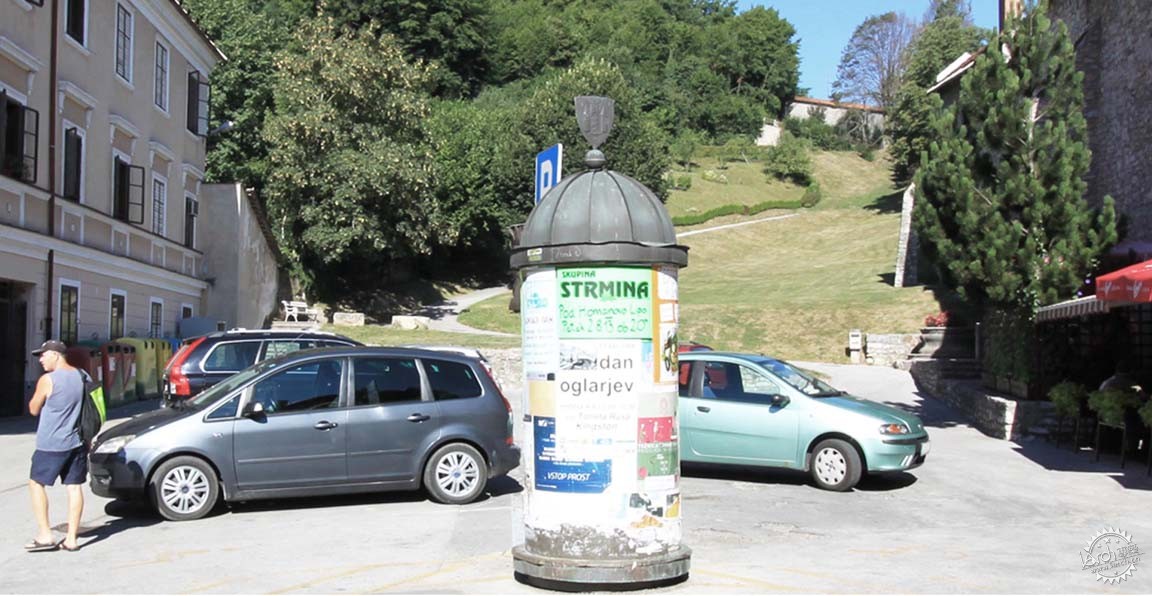
场地现状
ŠkofjaLoka是斯洛文尼亚最古老、保存最完好的中世纪城堡。城堡位于两条河流汇合处,处于地理制高点,历史气息浓厚。从河流至市中心是一片连绵的梯田,不同的网格组织形成了不同规模的公共空间。其中两个公共空间处于关键地位,一个是Mestni Trg,处于坡地顶端,另一个是Spodnji Trg,处于坡地底端。根据最早可考的中世纪文献记载,ŠkofjaLok城堡自1215年就已形成这样的格局。
1660年和1698年的大火摧毁了城堡的城墙和城门 。二十世纪的城市发展与汽车的出现又使城市公共空间地位下降,那么如何在设计中考虑行人的使用则成为了问题。
Previous state
Škofja Loka is Slovenia’s oldest and best conserved medieval town. Its location is remarkable since it lies at the confluence of the Poljane Sora and Selca Sora rivers at a point where the Sora plain rises towards the Škofja Loka and Polhov Gradec hills. In the town centre, situated above terraces rising from the river, layers of history are evident everywhere and in different ways, forming a mesh of several public spaces. Two squares stand out in the urban morphology, one at the top named Mestni Trg., and one at the bottom, Spodnji Trg. Rising above the town, the Škofja Loka castle overlooks these two public spaces, dominating its scenery at least since the year 1215, which is the first time it appears in medieval documents. Moreover, the town has conserved the original perimeter which once delimited its municipal bounds.
A good part of the town was devastated in fires of 1660 and 1698. These brought about accelerated and irreversible changes including the gradual loss of the defensive function of its walls, which were demolished, together with its gates, at the end of the eighteenth century. As occurred in so many other towns and cities of Europe, twentieth-century urban growth coincided with the appearance of the automobile, which meant that most public spaces were overlooked in urban planning projects and, accordingly, their use by pedestrians was disregarded.

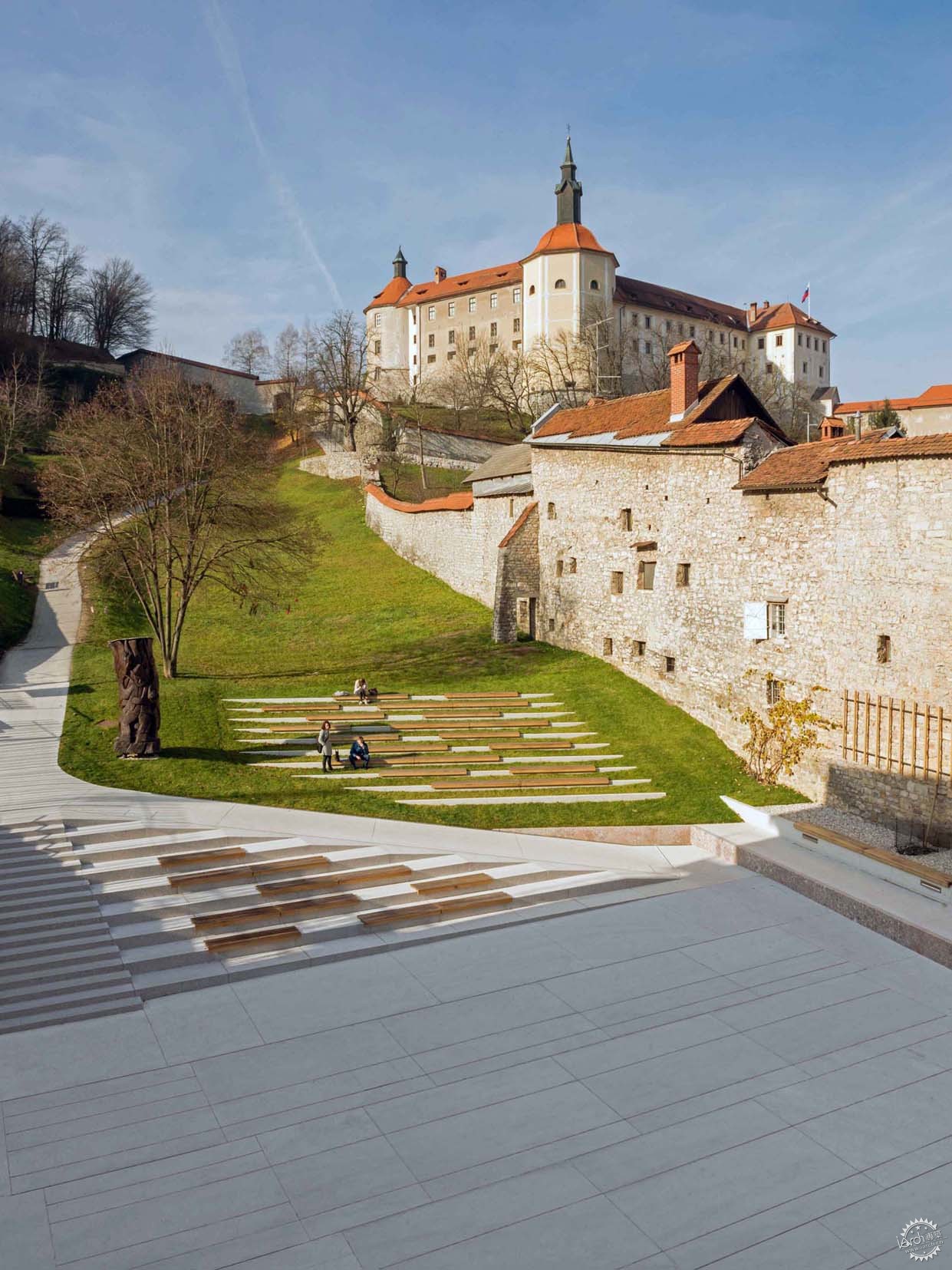
设计目标
2013年,借翻新城镇公共空间竞赛的契机,Ravnikar Potokar建筑事务所翻新了城镇的南部入口并设计了城堡脚下的游乐场。这个区域也是城镇两项传统活动的表演场地,即城堡戏剧及滑雪比赛。考虑到场地长期作为停车场,修复工作也迫在眉睫。
Aim of the intervention
In 2013, the municipality called for entries in a competition for renovating the public spaces in the town’s old centre and overhauling the banks of the two Sora rivers. The winner was the Ravnikar Potokar architecture office, and construction of the project’s second phase began in August 2017 with the intervention in Zamorc square and playground at the foot of the castle. The chief aim of this phase was to renovate the southern entrance to the town, an area bounded by the few still remaining relics of the old wall and the town council building. It is clearly a significant place in Škofja Loka, giving access to the south-western part from the Poljanska Valley as well as being the starting point of a path leading up to the main entrance of the castle. This is also the venue for two of the town’s traditional events: its oldest open-air performance, the “Škofja Loka Passion Play”, and a skiing competition using early wooden equipment. Hence, the importance of the restoration was beyond all doubt and, moreover, had become urgent ever since the area started to be used for open-air parking.

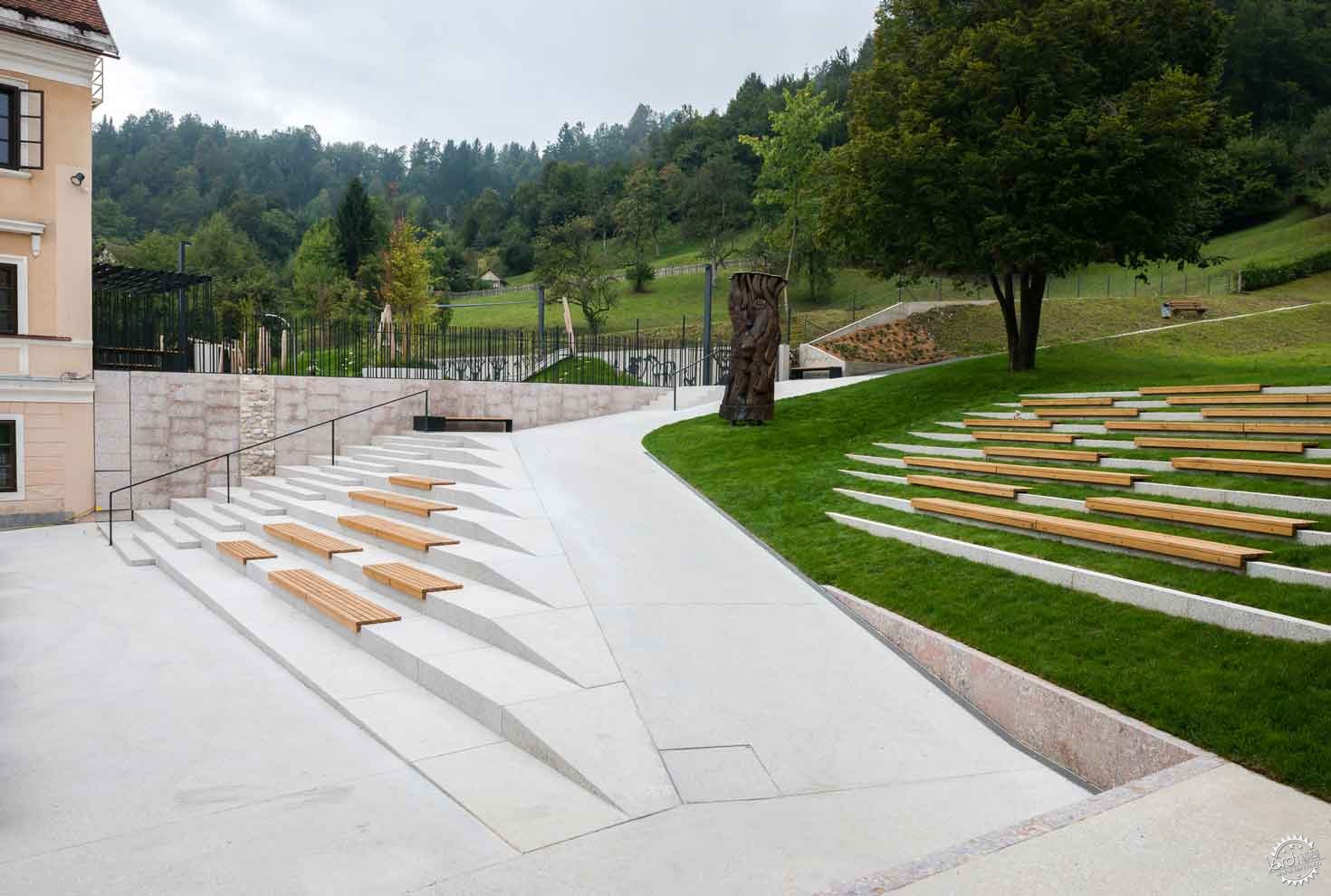

设计描述
考虑到现有的地形以及小镇丰富的历史文化,设计者想要通过一种极简的方法让二者形成联系,并且需要着重考虑广场与城堡之间的连接关系。地面高差可以借势形成露天剧场,为举办活动提供灵活的空间。改造的另一个重点是议会大楼上方的儿童游乐场,设计理念源于当地传说,相传当地领主Abraham Freising遭遇熊的袭击时被一名黑人仆人挽救,为了表达感激,Freising将他的容貌作为城堡的徽章,仆人在当地被叫做“Zamorc”,这个词也成为了城堡的象征。这个故事成为了设计的主要灵感来源,故事中的角色以金属剪影的形式点缀在操场四周,中间的绿色区域则以抽象形式演绎出该地Poljanska山谷的形象。项目中的所有材料均源于本地,地面和墙壁的石材是本地的花岗岩和石灰石,铺路的水泥和预制构件均包含本地产的特殊材料。
Description
The existent topography and its interrelation with the richness of the town’s layers of history and culture required a minimalist approach. Particular attention was given to the connection between the castle and the square below it. The difference in levels of the land was bridged by means of a structure resembling a tiered amphitheatre, designed with a view to its continuous use throughout the year and allowing the combination of several simultaneously occurring events. Another very important part of the renovation was the children’s playground above the town council building. The idea for its design came from a local legend about the local lord of the land, Abraham Freising, whose life was saved by a black servant when he was attacked by a bear. In order to show his gratitude Abraham Freising had the man’s face engraved in the town’s coat of arms. Known locally as “Zamorc”, the servant thus became the symbol of Škofja Loka. The main elements of the story have been used as the starting point of the project’s design. The characters are presented in cut-out metal forms on the lower part of the fence around the playground, while the central green area seeks to convey the abstract impression of a forest in the Poljanska Valley where the events are supposed to have happened. The materials used are of local provenance. The stone covering the ground and supporting the walls is granite and limestone from the region, and the cement used for paving and the prefabricated elements also contain compounds of local origin.
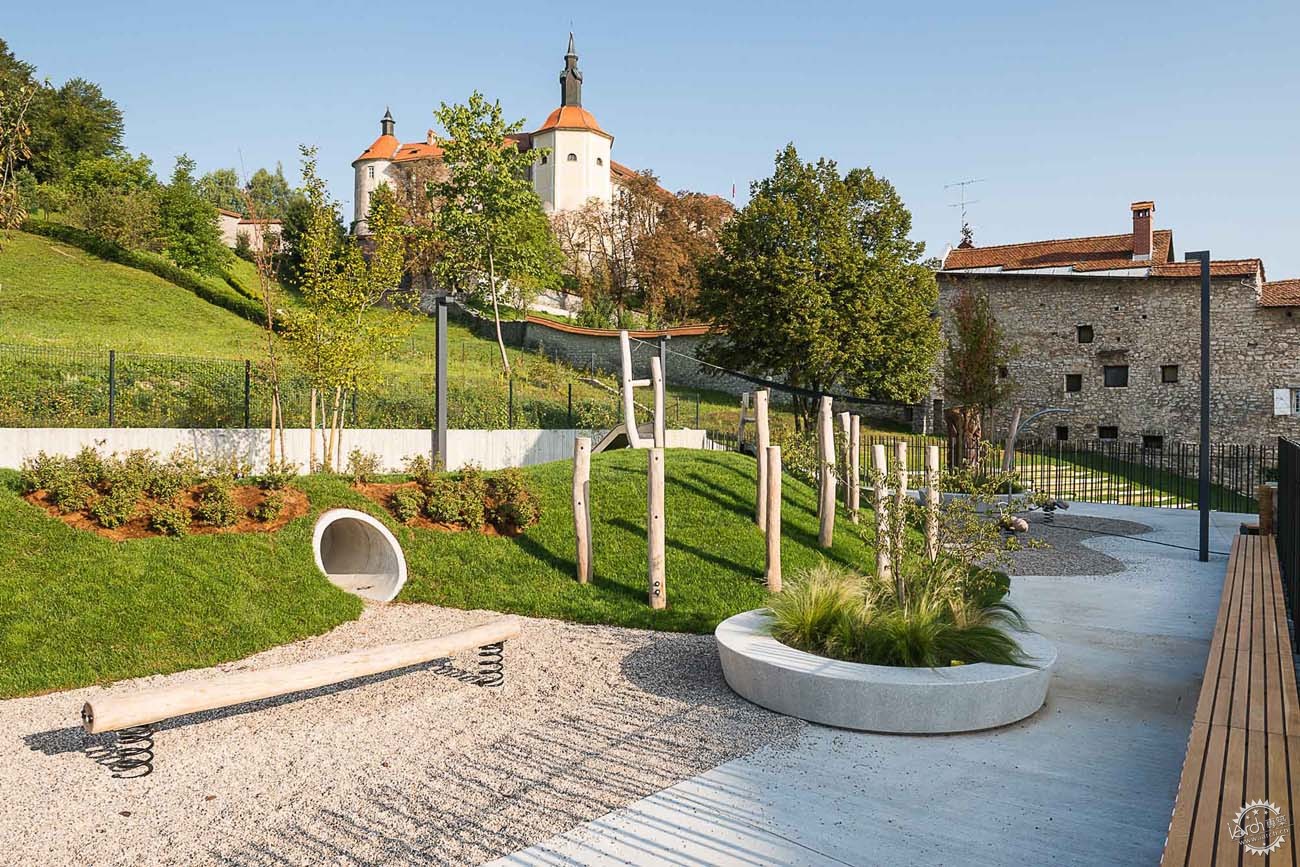
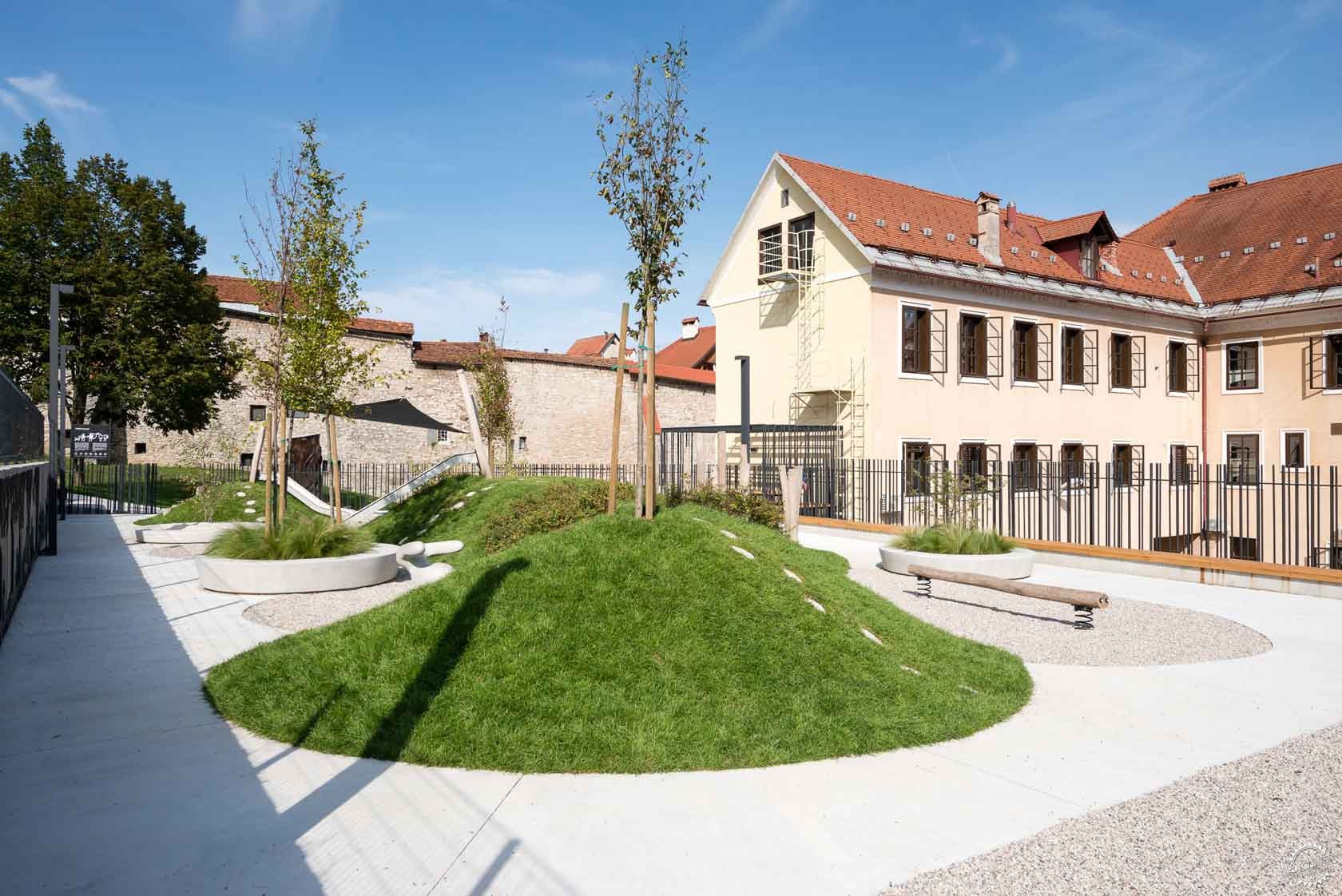
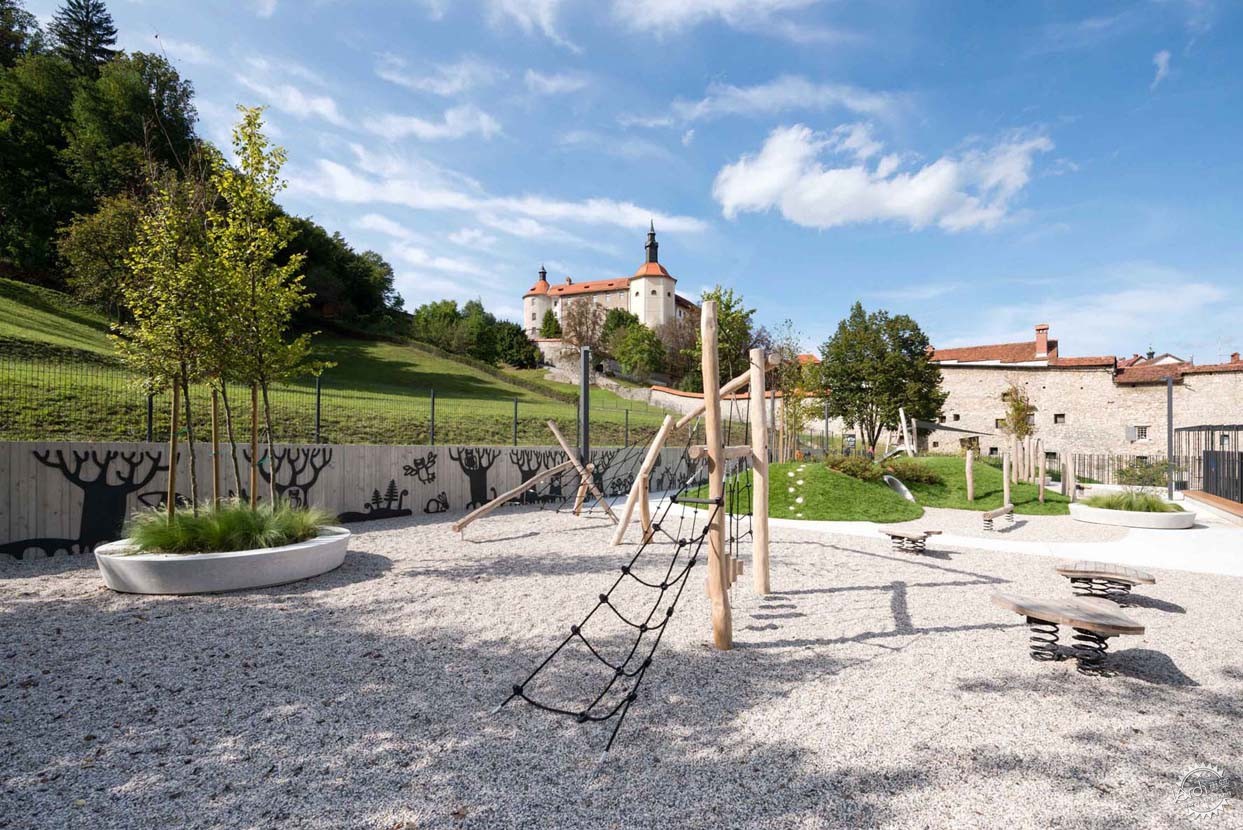

评价
正如建筑师Uroš Rustja所言,城市空间翻新是一项艰难的任务,需要设计者对城市的人文地理相当了解,同时要有敢于揭露问题的勇气。通过组合各种空间元素,构建更加有亲和力的城市空间,提升使用者体验,加强居民的归属感。
从这个理念出发,古城堡脚下的广场强调了曾经坐落于此的旧城墙,并于自然环境形成联系,并对历史进行了叙述。圆形露天剧场为传统和现代公共活动提供了合适的空间,也是适宜日常活动的场所,并且考虑到了残疾人通道和为视力不佳的人提供的触觉体验,是一个非常有包容性的场所。这个广场如今已经成为当地寓教于乐的著名景点。
Assessment
As the architect Uroš Rustja wrote in an article published in the magazine Piranesi, refurbishment of urban space is a sensitive task in which the authors of the work need to have considerable empathy with the past. At the same time, they should be courageous and take responsibility for bringing to light the layers in which the most significant history and contexts are to be found. From a well-proportioned combination of these elements it is possible to construct a more intelligible and harmonious urban space that is appropriate for pedestrians and, in particular, allowing for a genuine dialogue between the town and its residents.
In this regard, the renovation of the space at the foot of the castle emphasises and expresses its importance as an antechamber to the old walled town of Škofja Loka in its new role of connecting the built-up area with its natural setting and, at the same time, with the stories of the past. The tiered levels of the amphitheatre offer a fitting space for public events, both traditional and modern, while also providing a setting for everyday life. The inclusion of a ramp combined with the steps means safe access for disabled people and families with baby buggies going up to the castle or to the Zamorc playground. The playground square, also offering tactile experiences for people with eyesight problems, has now become a well-known attraction where children are educated about the history of their town while they play.

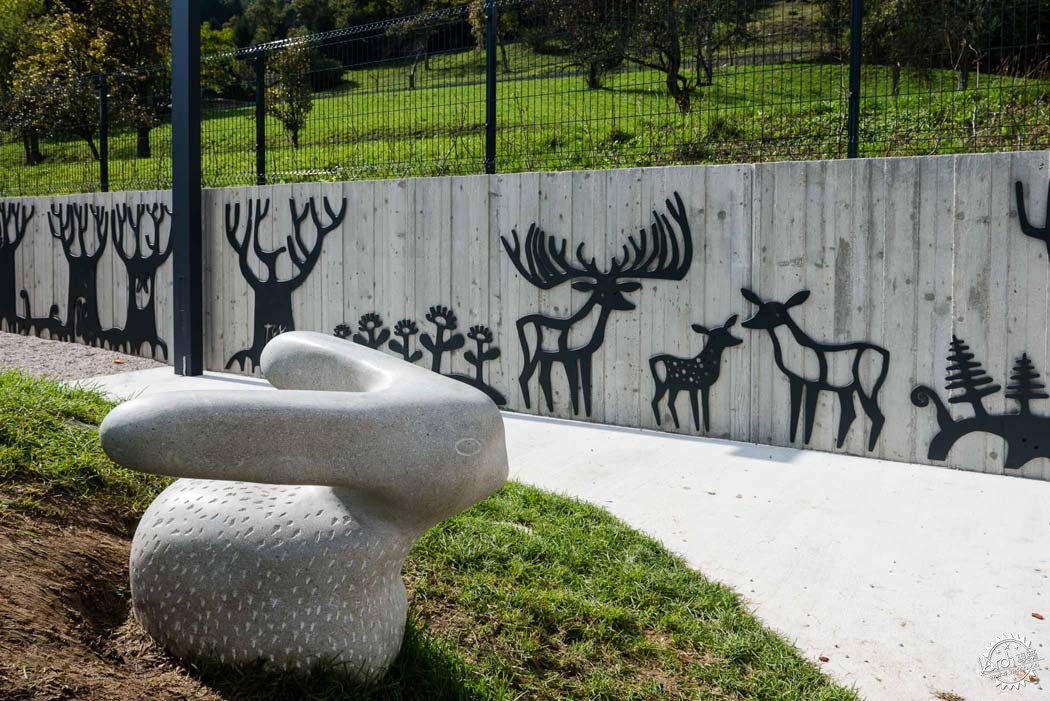
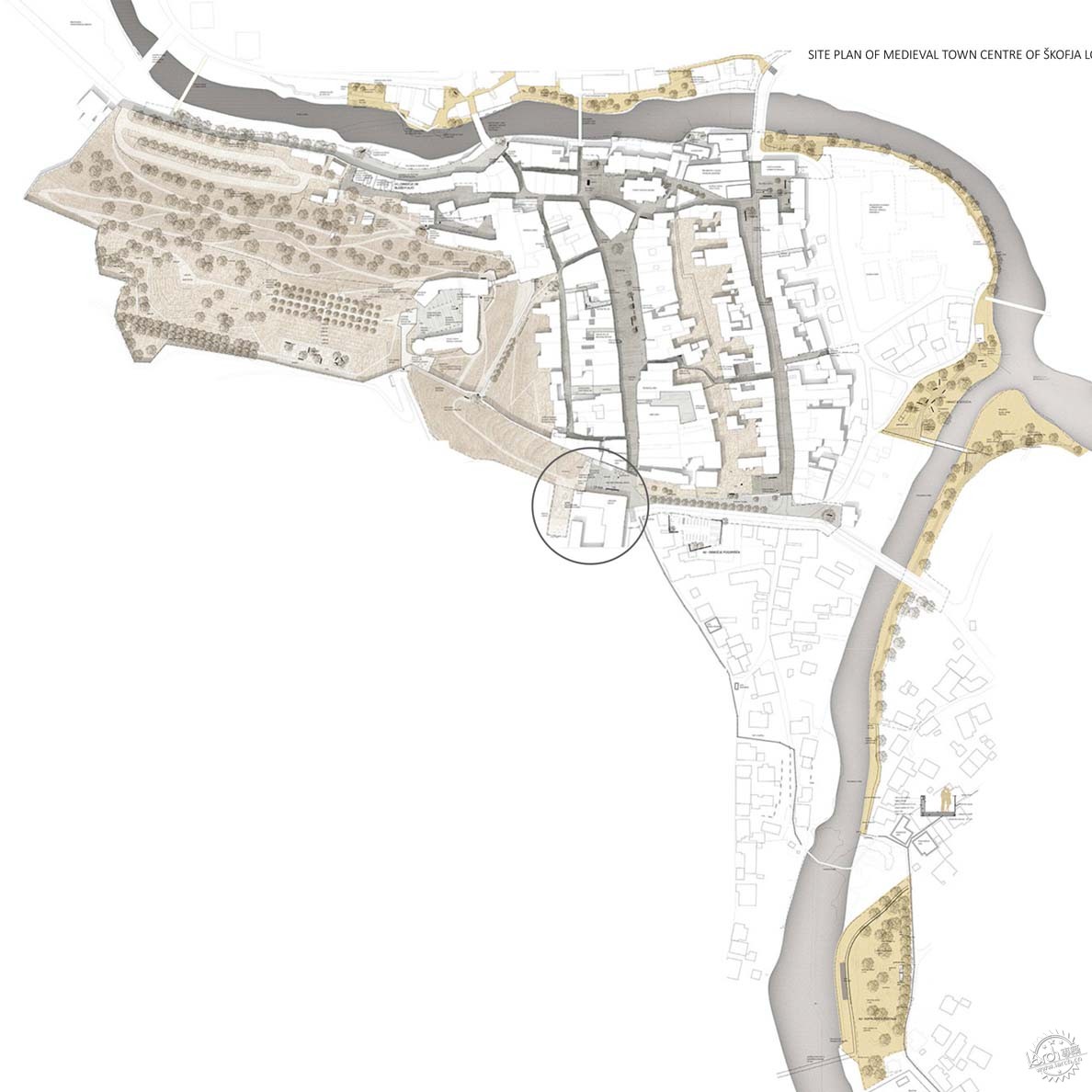
城市:Škofja Loka
国家:斯洛文尼亚
项目开始时间:2015年
开工时间:2016年
工作结束:2017年
面积:4150平方米
费用:929478欧元
开发商:Ravnikar Potokar d.o.o.
设计:Ravnikar Potokar d.o.o.
合作者:Robert Potokar, Primož Žitnik, Ajdin Bajrović, Tanja Simonič Korošak
CITY: Škofja Loka
COUNTRY: Slovenia
BEGINNING OF THE PROJECT: 2015
BEGINNING OF WORK: 2016
END OF WORK: 2017
AREA: 4,150 m2
COST: 929,478 €
DEVELOPER: Ravnikar Potokar d.o.o.
AUTHORS: Ravnikar Potokar d.o.o.
COLLABORATORS: Robert Potokar, Primož Žitnik, Ajdin Bajrović, Tanja Simonič Korošak
|
|
